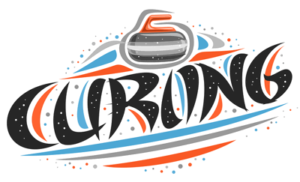 Even the most popular sports like football and tennis tend to attract a new audience that wouldn’t normally watch it when the big tournaments such as the World Cup or Wimbledon roll around, there are few things that do that in the same way as the Olympic sports.
Even the most popular sports like football and tennis tend to attract a new audience that wouldn’t normally watch it when the big tournaments such as the World Cup or Wimbledon roll around, there are few things that do that in the same way as the Olympic sports.
More specifically, the Winter Olympics boast sports that the watching audience don’t know much about before the tournament gets underway but then are experts in by the end of the month. That is very much the case with curling, which is a sport that sees its popularity rise once every four years and then wane again in the intervening years.
It is a game that sees players slide ‘stones’ across ice towards a target. The target itself is broken into four different segments and the 4 players that make up each team alternately throw their own granite stones down the ice to see how close to the ‘house’ they can get them to stop.
What makes it so thrilling to watch is that the non-throwing players on the team can ‘curl’ the stone towards its target by brushing the ice with a device that looks a bit like a broom, resulting in moments of high energy. While it is derived from a similar family as boules or bowls, the tactical nature of the sport is what lends it its nickname of ‘chess on ice’.
Best Betting Site For Curling
BetVictor

To bet on Curling you will need to go to one of the bigger more established bookies. You will generally find it listed under 'winter sports' when major events are approaching.
There is not a lot in it between the likes of Bet365, William Hill and Coral when markets depth and ante-post availability, but when it comes to prices we've found BetVictor to be consistently the best.
They also have good limits for high and low stakes, to suit a wider range of punters.
How To Bet On Curling
| Betting Term | Meaning |
|---|---|
| Tournament Winner | Just like with the World Cup in football or US Open in tennis, this is a bet on which team will win the tournament outright |
| Moneyline | This is a bet on the winner of an individual match |
| Totals | Will the total score be over or under a specific amount chosen by the bookmaker? You can usually bet on ends or on the overall total for the match |
| Handicap Betting | As with other sports, you’ll be able to bet on one team over another with a handicap in place. Let’s say you’re watching Canada v India, the odds will favour the home team so the bet won’t have much worth. Take a -1.5 on them, however, and they might go up to more palatable levels |
The explosion of online sportsbooks hasn’t just been great for punters hoping to have a flutter but also for the sports that were perhaps a touch under-represented on that front in the past. That is definitely the case for curling, which is now just as easy and quick to bet on as a far more mainstream sport.
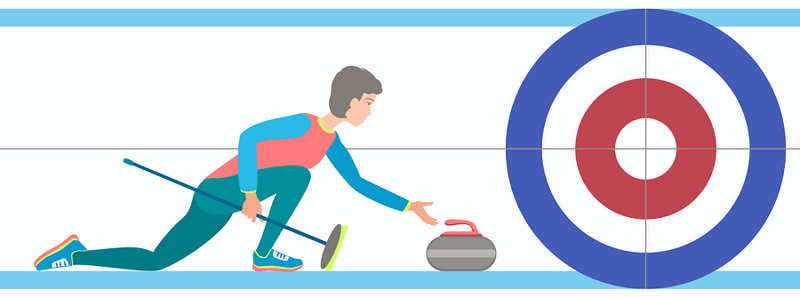
The options that you’ll get when it comes to betting on curling will differ from company to company, but there are still some major ones you’ll want to look out for. Some of them are obvious, whilst others are not.
The History Of Curling
Founded in the 1500’s
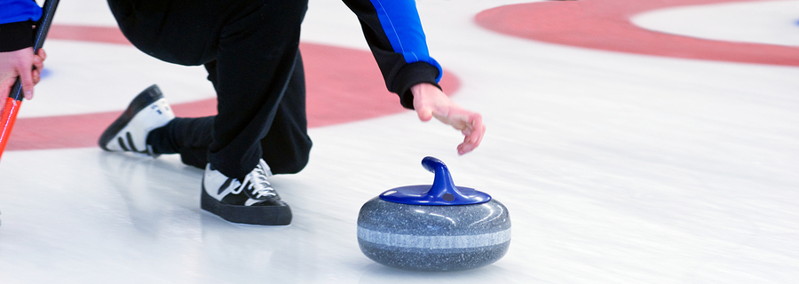
If you associate the sport of curling with Scotland then it’s probably with good reason, given that there is evidence to suggest that the sport was played there as long ago as 1511.
When a pond in Dunblane was drained they found a curling stone engraved with that year’s date on it, as well as another from 40 years later. One thing that can’t be argued with is the fact that written records at Paisley Abbey in Renfrewshire reference a game using stones on ice taking place in 1541.
The first time the sport’s name was written down was in 1620 in the words of a poem by Henry Adamson. It has also long been referred to as ‘the roaring game’ because of the sound that the stone itself makes as travels over the ice.
Kilsyth Curling Club was established in 1716 and claims to be both the oldest such club in the world and also responsible for the world’s oldest purpose-built curling pond. The rules of the sport weren’t officially established until 1838, with the sport involving the use of flat-bottomed stones found in rivers and fields during its early years.
Scotland And Curling
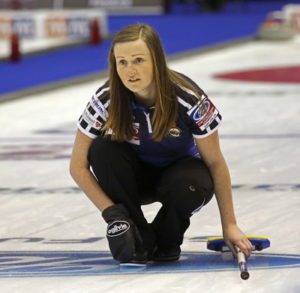 The sport of curling was a popular one in Scotland from its establishment as a regular sport in the 16th century. That was in part because the country’s climate lent itself to a sport that required frozen water as a playing surface, though purpose-built areas began to be created as the sport’s popularity grew.
The sport of curling was a popular one in Scotland from its establishment as a regular sport in the 16th century. That was in part because the country’s climate lent itself to a sport that required frozen water as a playing surface, though purpose-built areas began to be created as the sport’s popularity grew.
In its formative years there were no brooms used to control the stone and instead the players relied more on good fortune or natural skill than anything else. It was taken seriously, though, with weavers in East Ayrshire using the stone weights from their looms to play with.
The sport is also extremely popular in Canada, having made it over there thanks to Scottish emigrants. The Royal Montreal Curling Club is North America’s oldest sports club, having been established there in 1807. Even when the sport eventually found its way to Switzerland and Sweden, countries that you would naturally associate with Winter Olympic sports, it was courtesy of Scots.
Whilst the sport is now played around the world and is enjoyed by participants from countries as far flung and unlikely as Brazil and Japan, it still keeps its ties with Scotland thanks to the World Curling Federation being based in Perth.
Curling Becomes Competitive
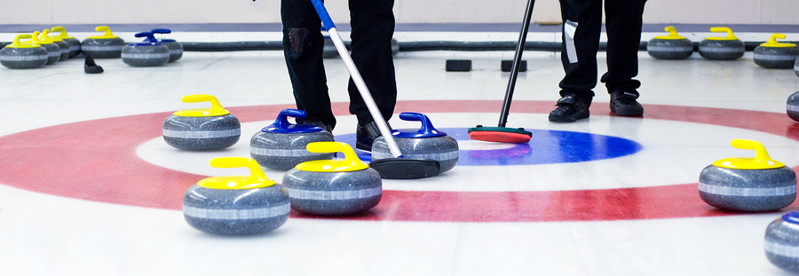
It goes without saying that almost any sport that has ever been played is competitive from the moment that the participants can agree on the rules, yet for curling it wasn’t until the formation of the Grand Caledonian Curling Club that the rules began to be properly established.
The club received its Royal charter in 1843, becoming the Royal Caledonian Curling Club thanks to the fact that Queen Victoria had watched the sport being played at Scone Palace on its polished ballroom floor. By 1853 the club had established a curling pond at Carsebreck Loch for Grand Matches to be played on.
The first time that an official world championship took place was in 1959 when a tournament known as the Scotch Cup began. That would develop into the World Curling Championship and initially it was a battle between male teams from Scotland and Canada.
The US was allowed to join in 1961, with Sweden coming in the year after. Despite Scotland inventing the sport, it was Canada that was dominant originally, winning the first 6 championships. By 1973 there were 10 countries taking part and in 1979 the women’s World Curling Championship took place for the first time.
Curling And The Olympics
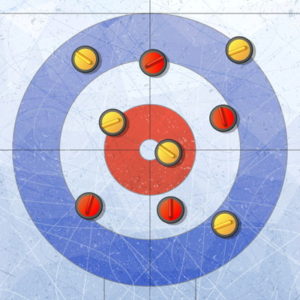 When the Winter Olympic Games was established in 1924 curling was one of the sports that was played, yet it wasn’t successful enough to maintain its place for the following Winter Olympics in 1928. It returned 4 years later but was only a demonstration sport.
When the Winter Olympic Games was established in 1924 curling was one of the sports that was played, yet it wasn’t successful enough to maintain its place for the following Winter Olympics in 1928. It returned 4 years later but was only a demonstration sport.
That meant that it was put on the program to introduce it to a new audience but that no medals were awarded for the winners. It was missing from the program for the next 56 years, returning as a demonstration sport in 1988 and then again in 1992.
The sport was added to the official program of Winter Olympic sports in 1998 when the event was hosted in Nagano, Japan. It has remained as part of the Olympic program ever since then, initially having both the men’s and women’s discipline but forgoing the option of allowing mixed teams to play as it was felt by the Olympic Programme Commission that that side of the sport hadn’t been developed enough.
That decision was reversed for the 2018 Winter Olympics, with the Canadian team winning Gold that year. That’s not a major surprise, given that the Canadians have dominated both disciplines since it was official added to the Olympic roster in 1998.
The Rules Of Curling
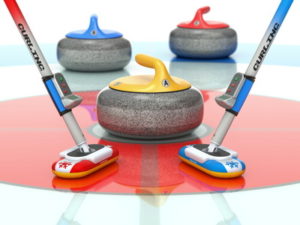 The idea behind curling is to outscore your opponents by getting your stone to stop closer to the centre of the house than they get theirs. Players take it in turns to take shots from one end to the other, with 8 rocks per team thrown for a total of 16.
The idea behind curling is to outscore your opponents by getting your stone to stop closer to the centre of the house than they get theirs. Players take it in turns to take shots from one end to the other, with 8 rocks per team thrown for a total of 16.
International games are usually played over 10 ends, with the winning team being the one that has won the most ends. If things are tied at the conclusion of the ends then play can continue for as long as needed until there’s a winner.
Stones need to be ‘in the house’ in order to score points, with any stone wither within or with its edge hanging over the line of the house counting. If a stone is barely in the ring then it’s known as a ‘biter’. The highest possible score for a team is 8, if all 8 of the stones thrown are in the house at the conclusion of an end. This is known as a ‘snowman’.
There are a number of different types of shots played during a curling match:
- Guards – This is when players throw a stone to the front of the house, aiming to protect a ‘shot-rock’ that is closest to the button
- Draws – These are thrown in an attempt to reach the house
- Takeouts – These are intended to remove a stone from play, whether that be one of the opposition’s stones or the thrower’s team’s stone if it’s in a bad position
The confusion over guard stones can come from the fact that they are not allowed to be removed from the Free Guard Zone, which is the first half of the home and the area in front of it, until 5 stones have been thrown. If they are removed from play then they get placed back into the position they were moved from.
There are other important phrases associated with curling, which are handy to know and are as follows:
- Burning – If a player touches the stone with their broom then this is known as ‘burning’ the stone and is an infraction
- Hammer – The final stone in an end is known as the hammer and it is often decided which team will have this by the toss of a coin. If neither team scores a point then the hammer remains with the same team for the next end
Sweeping
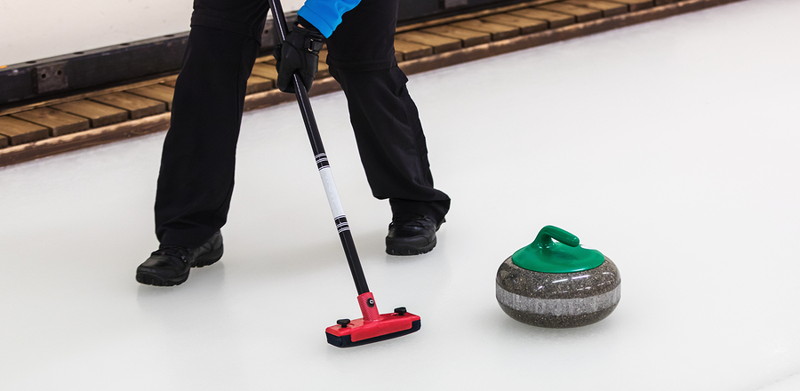
One of the key aspects of a curling match involves ‘sweeping’ the stone. Once it has been delivered it is still possible for the players to influence the direction that the stone takes by ‘sweeping’ the ice. Sweeping tends to be done for one of three reasons:
- To reduce the friction underneath the stone
- To decrease the stone’s curl
- To clean the path that the stone is taking
As stones slow down they tend to curl more, so sweeping done in the early part of a stone’s journey will increase its speed and straighten the path that it’s taking. Knowing when to sweep can make or break a team’s chances of winning an end.
Sweeping increases the distance the stone will travel, so sometimes teams have to decide whether it’s better to send it on the correct trajectory but travel too far or get the trajectory wrong but travel the right distance.
The key thing when it comes to sweeping is that it is allowed to happen anywhere on the ice up to the tee line. After that point only one player can sweep the stone and a member of the opposition team is allowed to sweep it in an attempt to send it to the wrong place.
Equipment
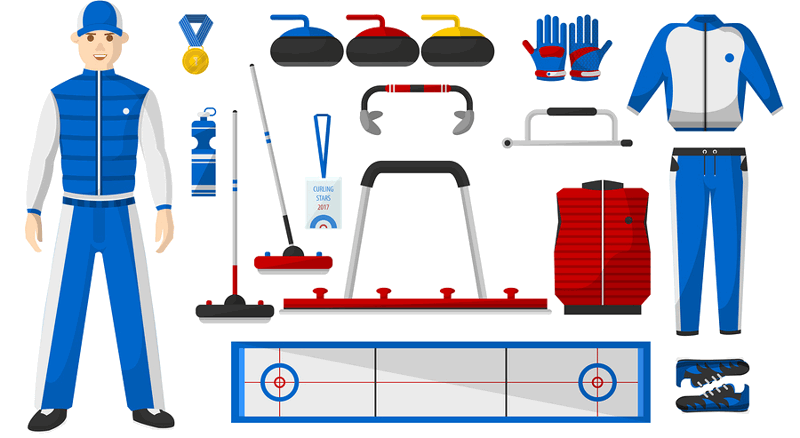
As you might expect for a specialist sport, curling boasts a decent amount of specialist equipment. The stones themselves weigh between 38 and 44 pounds and boast a maximum circumference of 36 inches. They also have a minimum height requirement of 4 and a half inches, with sides that bulge out over the flat bottom.
Proper curling stones are made of granite that comes from either Ailsa Craig, an island off the coast of Scotland, or Wales’ Trefor Granite Quarry.
The broom used in curling, sometimes referred to as a brush, were originally made of corn strands until man-made brooms began to be used. Nowadays the devices have fabric, horsehair or hog hair making up their heads, with the brush handle made of carbon fibre or fibreglass.
Shoes are an important part of curling, with one of them having a smooth sole that can slide on the ice and the other having a gripping sole that can stop the foot from slipping. The gliding sole tends to be made of teflon and allows the thrower to slide as they deliver the stone and the sweeper to slide alongside it as they try to dictate its direction of travel.
Other things such as stretchy pants for curling and curling gloves that both keep the hands warm and offer a grip on the broom are available.
The Rink
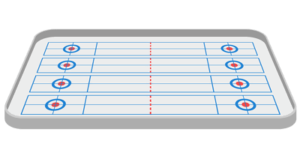 The playing surface for a curling match is usually called the Curling Sheet. The World Curling Federation has a strict definition of this area, which is rectangular and should be as flat and even as possible. In terms of measurements is it is between 146 and 150 feet in length and 14.5 to 16.5 feet wide.
The playing surface for a curling match is usually called the Curling Sheet. The World Curling Federation has a strict definition of this area, which is rectangular and should be as flat and even as possible. In terms of measurements is it is between 146 and 150 feet in length and 14.5 to 16.5 feet wide.
The house should sit in the centre of the sheet, sitting in the intersection of the centre line and the tee line, with the latter being 16 foot from the backboard at the end. The house boasts a centre circle with three concentric rings around it with diameters of 4, 8 and 12 feet. Ahead of the game starting water is sprayed onto the ice to form ‘pebbles’, which is usually re-sprayed before each game.
The Big Curling Tournaments
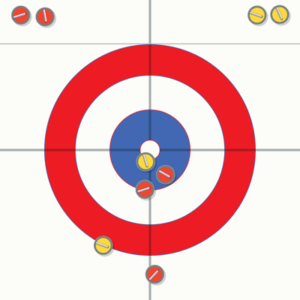 When it comes to curling tournaments you’ll likely find any number of ones if you’re willing to look at the local level, but for the major tournaments the field is a little bit more limited. Here are some of the bigger ones, in no particular order:
When it comes to curling tournaments you’ll likely find any number of ones if you’re willing to look at the local level, but for the major tournaments the field is a little bit more limited. Here are some of the bigger ones, in no particular order:
- Curling at the Winter Olympics – As mentioned elsewhere, it was played at the inaugural Winter Olympic Games but dropped in the years after, returning permanently in 1998 and now contested in the men’s, women’s and mixed disciplines
- World Curling Championships – Established in 1959 for men and 1979 for women, this tournament is arguably level with the Olympics in terms of prestige in the sport
- European Curling Championships – Established in 1975 and taking place on an annual basis, the European Curling Championships is for both men and women
- Tim Hortons Brier – Better known simply as ‘The Brier’, this has been held since 1927 and is a Canadian competition that decides who will represent the country in the World Curling Championships later in the year
- Scotties Tournament of Hearts – This is the equivalent to The Brier but for women, with the same prize of representing the country at the World Curling Championships
